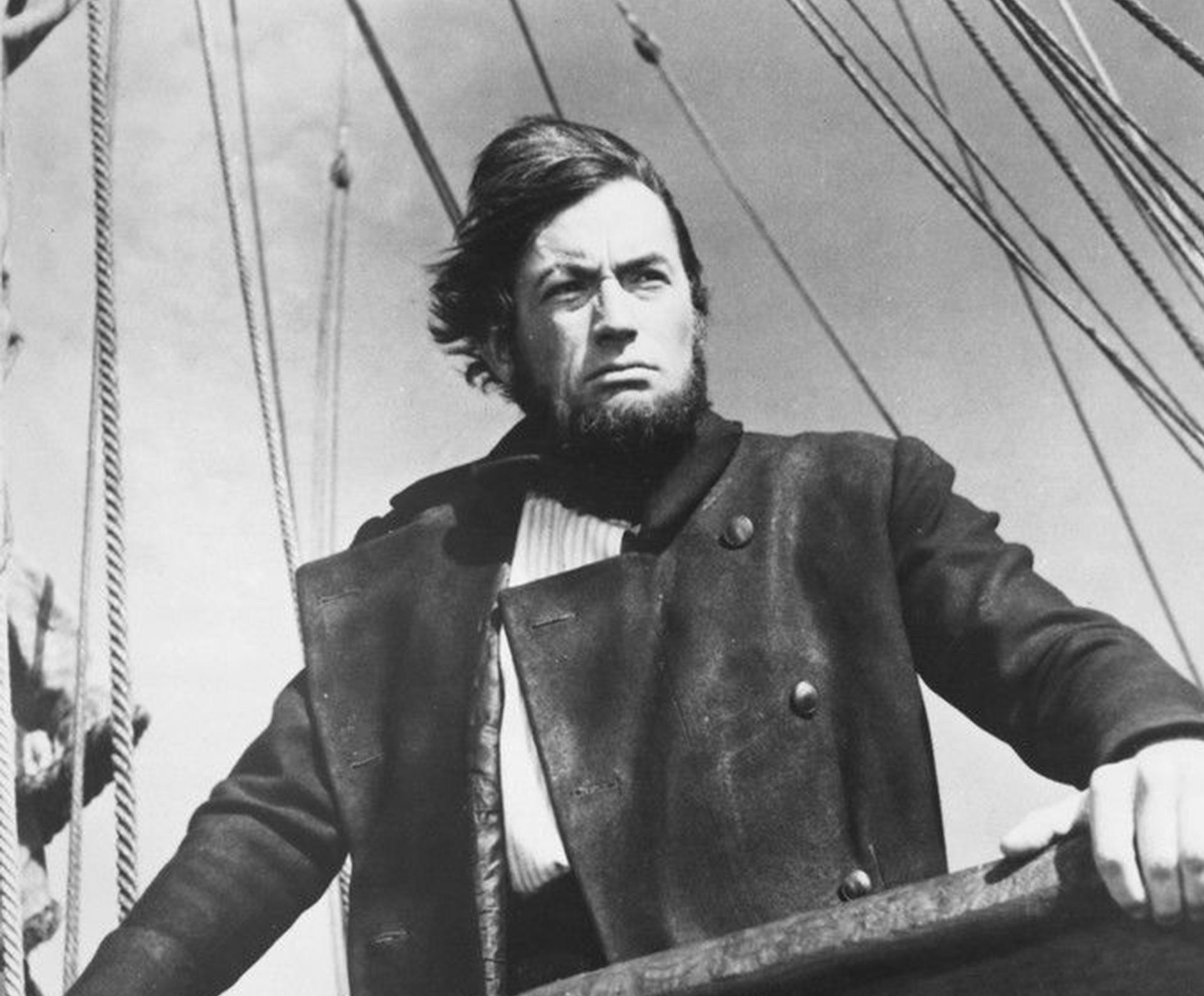Hubris On The High Seas

If you’re a drydocked winter sailor (and the Sag Harbor Whaling Museum is still closed), you can quench your maritime thirst with the palpable salt air and potent headwinds of John Huston’s classic 1956 film “Moby Dick,” a vivid, meticulous adaptation of Herman Melville’s 1851 novel.
A labor of love for director Huston, two years in the making, the film was shot in the seas off the coast of Spain, with a small West Ireland fishing village standing in for the story’s New Bedford home dock (and providing the memorable local faces of the crewmen’s left-behind wives, watching in poignant silence as their husbands embark on what will be a tragic last voyage).
Huston’s evocative script (co-written with novelist Ray Bradbury) and his talented international cast capture Melville’s riveting characters. Reserved and taciturn Leo Genn as Starbuck, the angst-ridden first mate, plays off against big-eared, jut-jawed Harry Andrews as Stubbs, his philosophical, incessantly cheerful second mate.
Orson Welles provides a remarkable cameo as Father Mapple, who sends the sailors off with a cautionary sermon on “Jonah and the Whale,” delivered from an authentic ship’s prow lectern that can still be seen in a New Bedford museum. Welles could not climb up the traditional rope ladder into the pulpit, and had to be hoisted into place — where, hidden on the lectern, Huston provided as reward a glass of brandy, contributing no doubt to the result that his long scene was shot in one single memorable take.
But the truly unforgettable performance in the film is Gregory Peck as Captain Ahab, the peg-legged monomaniac whose sole mission in life is to find and destroy Moby Dick, the legendary, immense white whale who in past mortal combat took Ahab’s leg — as well as his remaining sanity. Peck, playing against his heroic, leading-man type-casting (he would go to embody the iconic Atticus Finch in “To Kill a Mockingbird”), and resembling in his black suit and top hat a demented Abraham Lincoln, depicts a man dissolving before our eyes from obsession to madness.
Comparing the film to the book, the author’s voice (ostensibly the narrator Ishmael, but unmistakably Melville) revels in descriptive detail the halcyon delights and stormy ravages of life at sea — a background tenor which permeates both the book’s action sequences and its descriptions of intricate maritime lore. These latter educational “lectures” (which as a literary device alternate with the inexorable dynamics of the ongoing story), obviously cannot be captured in a film. However, Huston achieves the same end by depicting, through film, the craft of sailing a three-masted whaler. The vivid cinematography (Oswald Morris) and crisp editing (Russell Lloyd) put the viewer below deck witnessing the ship’s grinding chores, behind the wheel coping with its challenging seas, or on its yardarm experiencing the solitary ecstasy of the endless horizon.
As the story tracks Ahab’s ship Pequod in its pursuit of his prey — around the Cape of Good Hope, past the Malays into the Sea of Japan and the Pacific — the action picks up strong momentum. Undaunted by fierce storms, by unwanted contact with other whalers, even by the religiously metaphorical visit of St Elmo’s Fire (a meteorological phenomenon that electrifies the entire boat in green flames), the Pequod plows on to its ill-fated rendezvous with Ahab’s nemesis, the malevolent white whale.
The climax of the film is a horrifying battle of man versus nature, each side bent on destruction — Ahab in his madness assuming the role of God (or Lucifer?), in a bizarre pas de deux with his Leviathan rival, bringing down his entire world in a maelstrom of devastation and death.
A dramatic and cautionary ending. It makes one think twice about taking your Sailfish out on the bay.
“Streaming” is a periodic look at classic films, available on home networks and apps. This film is currently available on iTunes, Vudu, and Amazon Prime.



